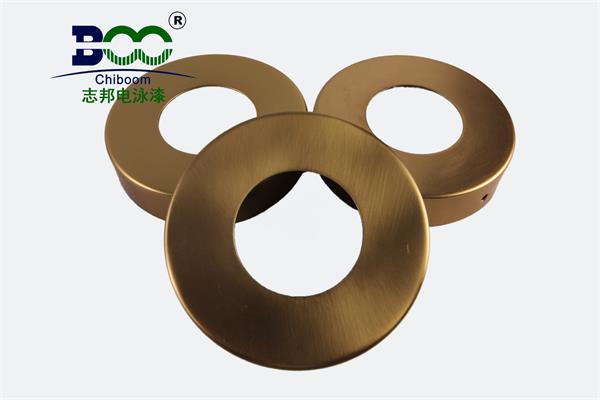Technical Requirements for Electrophoretic Paint: An In-depth Look and Precise Application
Electrophoretic painting, as an efficient and environmentally friendly coating technology, has gradually become an essential part of modern coating processes since its widespread industrial application in the 1960s. With its unique advantages and stringent technical requirements, electrophoretic coating plays an irreplaceable role in various fields such as automobiles, home appliances, and electromechanical equipment. This article will delve into the technical requirements of electrophoretic paint, helping readers better understand and apply this technology.
The basic principle of electrophoretic coating involves immersing a conductive substrate in a tank filled with water-diluted electrophoretic paint and depositing paint particles onto the substrate's surface through the application of direct current. This process involves four chemical and physical changes: electrolysis, electrophoresis, electrodeposition, and electroosmosis, each playing a crucial role in the final coating quality.
The technical requirements of electrophoretic paint are mainly reflected in two aspects: paint film performance and process performance. Paint film performance requires the electrophoretic coating to be smooth and free of exposure and pinholes, with a certain thickness and gloss. Additionally, the paint film must possess excellent pencil hardness, impact strength, adhesion, and flexibility to ensure durability and corrosion resistance in practical applications. Especially, salt spray resistance is a crucial indicator for measuring the quality of electrophoretic paint, as it should maintain corrosion resistance for a long time in harsh environments.

In terms of process performance, tank solution stability, throwing power, and paint utilization rate are key factors. Parameters such as the tank solution's pH value, conductivity, solids content, and solvent content must be strictly controlled to ensure coating stability and consistency. The throwing power directly affects the uniformity of the coating inside complex workpieces, with high throwing power significantly improving workpiece corrosion resistance. The paint utilization rate reflects the efficiency and environmental friendliness of electrophoretic coating, with a utilization rate of over 95% making it a preferred option for energy saving and consumption reduction.
In practical operation, electrophoretic coating process parameters such as electrophoretic voltage, electrophoretic time, drying temperature, and drying time also need to be adjusted according to specific workpieces and paints. The reasonable setting of these parameters is crucial for achieving the desired coating effect.
Furthermore, the upgrading of electrophoretic paints is also an important manifestation of technological progress. New generations of cathodic electrophoretic paints have been continuously optimized in terms of throwing power, edge corrosion resistance, and pigment-to-binder ratio to meet more stringent coating requirements and environmental standards.
The development of electrophoretic paint technology hinges on a deep understanding and precise application of its technical requirements. As self-media practitioners, we have a responsibility to provide readers with accurate and in-depth information, helping them better understand and master electrophoretic paint technology. By continuously learning, summarizing, and practicing, we can continuously improve our professional competence and provide readers with more valuable content.
The technical requirements of electrophoretic paint are multifaceted, covering paint film performance, process performance, operating parameters, and more. Only by comprehensively understanding and mastering these requirements can we maximize the advantages of electrophoretic coating in practical applications, providing efficient and environmentally friendly coating solutions for industrial production.





 WeChat
WeChat